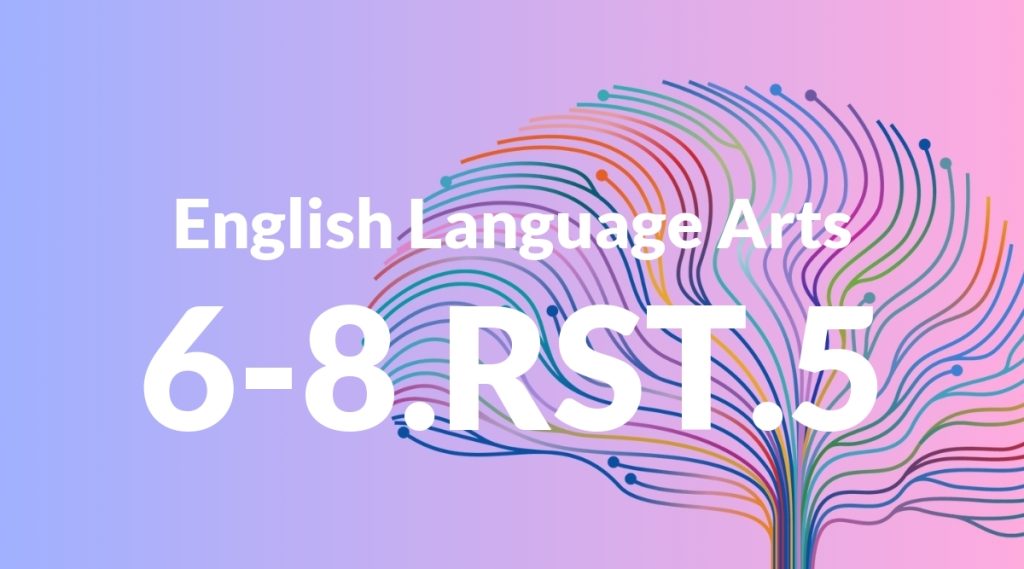Standard: 6-8.RST.5 – Analyze the structure an author uses to organize a text, including how the major sections contribute to the whole and to an understanding of the topic.
Grade level: Grade 6-8
Subject: English Language Arts
Domain: Science & Technical Subjects
Teacher Overview
This standard focuses on helping students understand how authors organize their texts and how the structure of a text contributes to its overall meaning. This skill is crucial for students to develop advanced reading comprehension and critical thinking skills. Before tackling this standard, students should be familiar with basic text features and how these features help organize information within a text.
Mastering this standard will enable students to critically analyze and understand complex texts, preparing them for higher-level reading and writing tasks.
Common Misconception 1
A common misconception is that text structure only refers to the order in which paragraphs appear. This is incorrect because text structure involves understanding the purpose and function of each section within the text.
Intervention 1
Use graphic organizers to help students visually map out the structure of a text and discuss how each part contributes to the whole.
Common Misconception 2
Another misconception is that all texts follow the same structure. This is incorrect because different types of texts use different structures to achieve their purposes.
Intervention 2
Provide diverse examples of text structures and engage students in activities that require them to identify and compare these structures.
Prerequisite Knowledge
Students should have a basic understanding of text features such as headings, subheadings, paragraphs, and how these elements contribute to the overall structure of a text.
Subsequent Knowledge
Students will develop the ability to critically evaluate and synthesize information from multiple texts, enhancing their comprehension and analytical skills in more complex subjects.
Instructional Activities
- Create graphic organizers for different text structures.
- Analyze the structure of a scientific article.
- Compare and contrast the structures of two different texts.
- Write a summary explaining how the structure of a text contributes to its meaning.
- Engage in group discussions about the purpose of different text sections.




